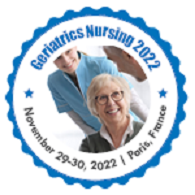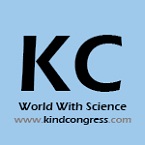Renowned Speakers
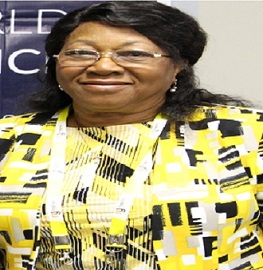
Patricia A Seabrooks
Miami Regional College, United States USA
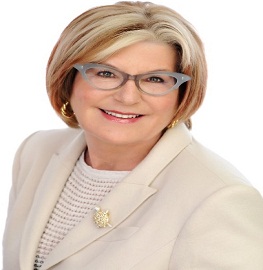
Louise Bradley
Mental Health Commission of Canada, Canada Canada
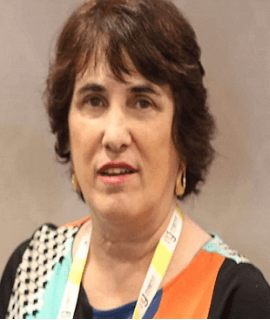
Daryle Wane
Pasco-Hernando State College, United States USA

Brittany Lyman
University of Michigan-Flint, United States USA
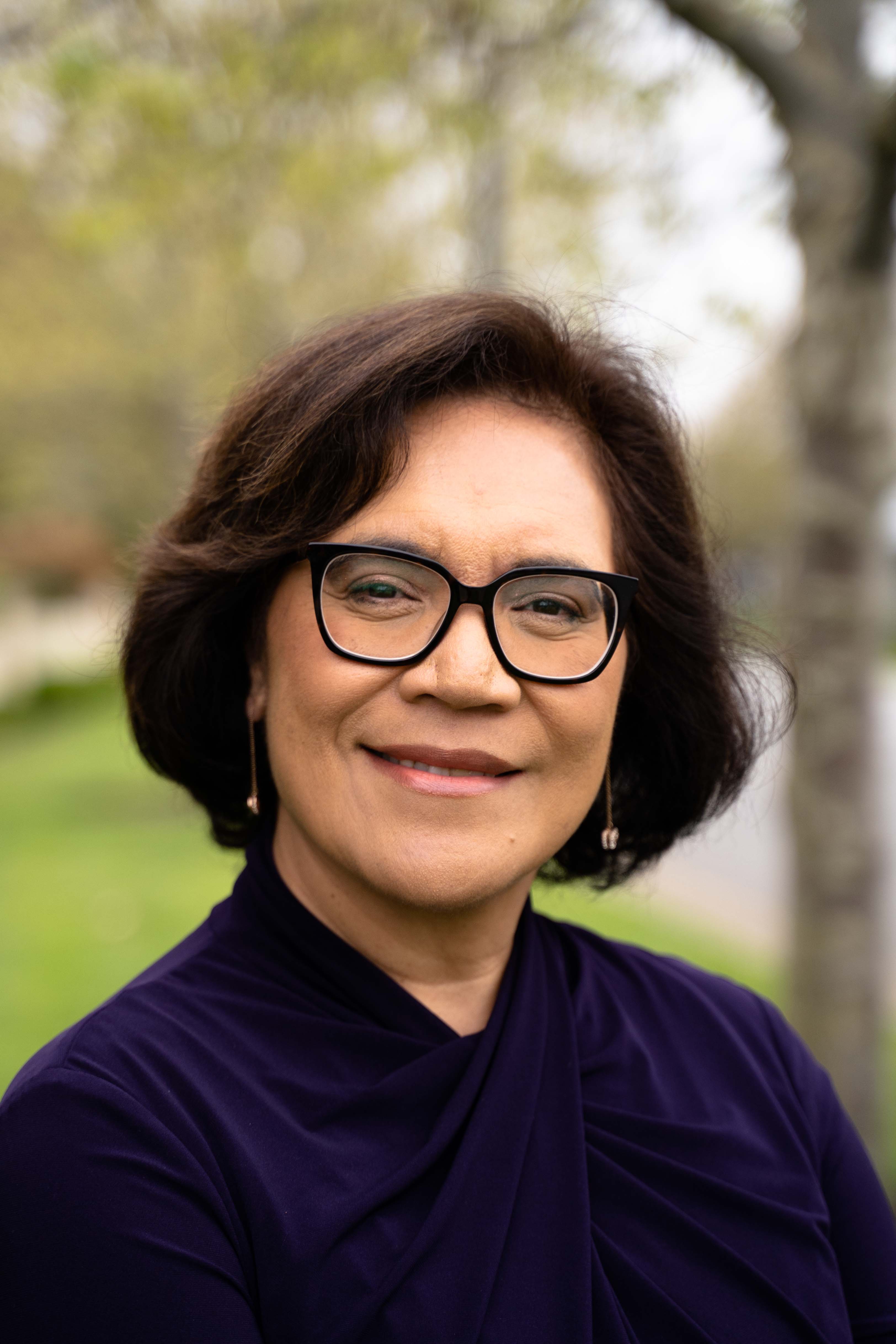
Jean Palalagi-Gunston
Swinburne University, Melbourne, Australia
Recommended Global Nursing Webinars & Conferences
Europe & UK
Asia Pacific & Middle East
Canada
GERIATRICS NURSING 2022
ABOUT CONFERENCE
GERIATRICS NURSING 2022 welcomes all the participants from all over the world to attend this auspicious event which is being hosted at November 29-30, 2022 Paris, France. We cordially welcome all the International Participants, Doctors, Eminent Researchers, Students, Business Entrepreneurs and Delegates.
This summit includes Speaker talks, Keynote sessions, and Poster presentations from the Young Researchers, Symposia, and B2B Meetings with world-renowned speakers from the stream of Geriatrics.
GERIATRICS NURSING 2022 is a unique opportunity to discuss best practices within the laboratory and those in other industries, there will be many seminars and technical sessions taking place which will catch the attention of the professionals to attend GERIATRICS NURSING 2022 this summit conveys recent developments in geriatric Medicine, geriatric drugs and products manufacturing. A complete knowledge of a Medical discipline that describes the geriatrics nursing.
The aim of the GERIATRICS NURSING 2022 is to spread knowledge and real-world impact in an atmosphere of true international cooperation between scientists, engineers and have interactive sessions by bringing together again the world-class researchers, International societies and Industrial heads to discuss the latest developments and innovations. It is a great platform for companies as well as institutions to represent their research services, products, innovations and research results in the fields of Geriatrics.
The Agenda of the Conference is to collate the views from each of the key professionals and groups those being in, Medical field, Research Field, those being Physicians, Pharmacists, Public Health Advisors, Geriatric Manufacturing Companies, to share advanced knowledge.
YRF Registration benefits:
- Young Scientist Award recongination certificate and memento to the winners
- GERIATRICS NURSING 2022 provides best Platform for your research through oral presentations.
- Learn about career improvement with all the latest technologies by networking.
- Provide an opportunity for research interaction and established senior investigators across the globe in the field of Geriatrics, Gerontology & Elderly Care.
- It’s a great privilege for young researchers to learn about the research areas for expanding their research knowledge.
Track and Sessions
Track 1: Geriatric Nutrition:
Changes associated with normal aging increase nutritional risk for older adults. Nutrition has a major role in protecting health and slowing disease progression. Paradigms that promote the nutritional components of healthy aging are needed to increase the age of chronic degenerative disease onset and to maintain healthy, functional lives for as long as possible. At this time, there is a tremendous disconnecting between nutrition and how it is implemented into healthcare.
- Diet enrichment
- Nutrition intervention in specific diseases
- Obesity in older people
Track 2: Economic and Social Impact of Ageing
The world’s population is ageing rapidly. Between 2015 and 2050, the proportion of the world’s older adults is estimated to almost double from about 12% to 22%. In absolute terms, this is an expected increase from 900 million to 2 billion people over the age of 60. Older people face special physical and mental health challenges which need to be recognized. Over 20% of adults aged 60 and over suffer from a mental or neurological disorder (excluding headache disorders) and 6.6% of all disability (disability adjusted life years-DALYs) among people over 60 years is attributed to mental and neurological disorders. Aging of the population influences all parts of the society including health, social security, education, socio-cultural activities and family life. The financial and social outcomes of population ageing are clarified by changes in lifecycle behaviour.
- Increase in the dependency Ratio
- Economic and social impacts of housing
- Managing a healthy ageing workforce
Track 3: Elder abuse, Law and Right
The abuse of elderly happens too frequently yet remains a largely hidden problem. It is anticipated to increase as many countries are experiencing rapidly ageing population. Senior abuse can prompt serious physical injuries and long-term psychological consequences, expanded danger of nursing home placement, use of emergency services, hospitalization and death.
- Emotional abuse
- Financial abuse
- Domestic violence
Track 4: Genetics of Ageing
Genetics of aging is generally concerned with life extension associated with genetic alterations, rather than with accelerated aging diseases leading to reduction in lifespan. The first mutation found to increase longevity in an animal was the age-1 gene in Caenorhabditis elegance.
- Molecular genetics of ageing
- Ageing and DNA-repair capability
- Somatic mutations and ageing
Track 5: Geriatric Rehabilitation
With increased age, patients regularly confront numerous physical and emotional changes that can influence level of function and well-being. Rehabilitation keeps up functional independence in the elderly. Rehabilitation of geriatric patients is basic for the patients' wellbeing and for society. Geriatric rehabilitation additionally have a role in transitional care, where patients are alluded by a hospital or family doctor, when there is a prerequisite to give hospital based short term intensive physical therapy went for the recuperation of musculoskeletal function, especially recovery from joint, ligament, or tendon repair.
- Movement therapy
- Electrotherapy
- Postural exercises
Track 6: Geriatrics and Gerontology
Growing oldest old number of people who are susceptible to several medical complications such as neurological, respiratory, orthopedic and cardiovascular diseases coupled with increase in the advancement of technology such as the development of specialty robots skilled for assisting old people in carrying out day to day operations is anticipated to drive the geriatric care services market share. The global geriatric research market was valued at US$ 599.6 billion in 2015 and is expected to expand at a CAGR of 4.2% during the period 2016 – 2024.
- Geriatric surgery
- Geriatric otolaryngology
- Geriatric gastroenterology
Track 7: Health for Ageing
The Health technology can help change and develop health behaviors like increased consumption of fruits and vegetables, stress management, reduced consumption of salt and improved quality of diet and sleep; and improve self-efficacy in elderly individuals with chronic disease such as cognitive disorders & Alzheimer’s, heart disease and susceptibility to metabolic risk & diabetes through text messages, voice messages, voice calls and game-based mobile applications.
- Major challenges in telenursing
- Remote patient monitoring
- Ageing statistics
Track 8: Management of Cancer in Older People
Population aged more than 65 years are more inclined to chronic diseases because of their weak immune system. With a rapidly ageing population moving the spotlight to geriatric oncology, research in this field is also rapidly changing and progressing. Older adults are heterogeneous and regularly barred from clinical trials. New models of care would be invaluable for older adults with cancer, encouraging joint effort, correspondence, and patient-centeredness and limiting the fracture that debilitates the current provision of cancer care. The more regrettable result for elderly patients is just halfway disclosed by decreased tolerance to treatment regimens related with the expanding number and seriousness of comorbidities.
- Colorectal cancer
- Hematological cancers
- Head and neck cancers
Track 9: Osteoporosis and Bone Health
Osteoporosis is a kind of disease which is caused due to low bone mass and density and results in fragility of bones, this in result increases the risk factors like bone, spine and hip fractures and bones usually get porous in elders. The probability of Osteoporosis diseases is high in Elderly than young people. This is a silent disease where you don’t find symptoms for your bone loss an inadequate supply of calcium over a lifetime can contribute to the development of osteoporosis.
- Genetics of osteoporosis
- Epidemiology of osteoporosis
- Nutrition and osteoporosis
Track 10: Palliative and Community Nursing
Palliative care is a methodology that enhances the quality of life of patients and their families confronting the issue related with life-threatening illness, through the counteractive action and help of suffering by methods for early identification and flawless evaluation and treatment of pain and different issues, physical, psychosocial and spiritual. Community nursing incorporates Public Health Nursing and Community Health care.
- Emergency and critical care nursing
- Community health nursing
- Nursing home healthcare
Track 11: Stem Cells and Ageing
Novel therapeutics and routine utilization of autologous stem cell transplantation have prompted considerable changes in persistent survival, in spite of the fact that enhancements have been greater among patients younger than age 65. Europe is the second biggest contributor as far as income for the development of the worldwide stem cells market. Patients from different nations in Europe and in addition the U.S. also, Canada travel to Germany to get medical treatments at reasonable expenses. Likewise, an increasing number of patients are taking the choice of undergoing stem cell procedures in Germany.
- Tissue engineering
- Stem cell apoptosis and signal transduction
- Stem cell technologies
Track 12: Alzheimers Disease and Dementia
Alzheimer's disease is a neurological cerebrum issue. Alzheimer's is the most widely recognized type of dementia. Dementia is a disorder, generally of a chronic or progressive nature, caused by a brain illness that affects memory, thinking, behaviour and capability to perform regular exercises. The number of individuals living with dementia worldwide is at present evaluated at 47 million and is anticipated to increment to 75 million by 2030. The number of instances of dementia is assessed to relatively triple by 2050.
- Nursing care in dementia
- Alzheimer disease and cellular mechanisms
- Dementia care and awareness
Track 13: Geriatric Services
Geriatric care services enable families to make and implement long term care plans for their loved ones. Geriatric Services are hospital and community-based health care services that analyze, treat and restore fragile older adults with complex medical, functional and psychosocial issues. Elderly patients frequently require an assortment of services to help with medicinal services and different issues. Sometimes, geriatric patients require home care, which may be given by organizations that utilize nurses and other.
- Elderly home care services
- Geriatric clothing
Track 14: Geriatrics and elderly care
The global population of elderly of 65 years is growing at an exponential way, driven by better healthcare, nutrition and an abrupt decrease in infectious diseases exposure. From few years it got witnessed in many cases that changing demographics and an increasing life-expectancy of the global population, resulting in the rapid growth of a geriatric population requiring medical support. Likewise, a changing pattern in the absence of family based providing care and in addition changing consumer preferences relating to the kind of medical is also emerging in many countries.
- End of life care
- Elderly home care
- Ageing and death biology
Market Analysis
Market Study of Geriatrics in USA | Europe | Middle East | Asia Pacific:
USA: By 2030, it is estimated that the US population of people age 65 and over will double, making up over 20% or about 70 million of the country’s population. As the baby boomers enter the geriatric population, this has the potential to enormously escalate the nation’s already high health care costs. The U.S. population is “graying” at a rapid rate. According to data published by the United Nations in 2014, it has been estimated that by the year 2022, approximately 35% of the population would be above 60 years of age.
Europe: In 2013 the population of the EU (28 countries) was roughly 507 million. Projections show a rise in the European population of over 18 million (3.6%) in the next 35 years, with the population peaking in 2050 at 525.5 million. The median age in Europe has risen by 8.3 years in the last half a century, from 31.5 in 1960 to 39.8 in 2010. It is projected to rise by another 7.4 years, to 47.2, by 2050. The percentage of Europeans aged over 65 is projected to rise from 16.0% in 2017 to 29.3% in 2050. The European population aged over 80 is set to rise significantly. In 1960 just 1.4% of Europeans were over 80. This figure reached 4.1% in 2010 and is projected to increase to 11.5% by 2050.
Middle East: The Middle East will develop rapidly aging populations within the next few decades. Many factors has resulted in increase in the elderly including improvement in living standards, the curbing of communicable disease, and the latest breakthroughs in medical science. The World Health Organization, estimates that from 2000 to 2050, the rate of growth of the population above age 65 is projected to be 4%–5%, and the average annual growth rate of the oldest old (85 years and older) will exceed 5% in eleven Arab countries.
Asia Pacific: The Asia-Pacific region is undergoing profound and rapid population changes. All countries in Asia and the Pacific are in the process of ageing at an unprecedented pace, although the timing and pace of this transition varies across the region. In 2016, approximately 12.4 per cent of the population in the region was 60 years or older, but this is projected to increase to more than a quarter or 1.3 billion people by 2050. By 2050, nearly 8 in 10 of the world’s older population will live in the less developed regions. This is especially pertinent for a region such as Asia and the Pacific.
Importance and Scope:
The world’s older population continues to grow at an unprecedented rate. Today, 8.5 percent of people worldwide (617 million) are aged 65 and over. According to a new report this percentage is projected to jump to nearly 17 percent of the world’s population by 2050 (1.6 billion). Population ageing is poised to become one of the most significant social transformations of the twenty-first century, with implications for nearly all sectors of society, including labor and financial markets, the demand for goods and services, such as housing, transportation and social protection, as well as family structures and intergenerational ties. the number of older persons — those aged 60 years or over — is expected to more than double by 2050 and to more than triple by 2100, rising from 962 million globally in 2017 to 2.1 billion in 2050 and 3.1 billion in 2100. Globally, population aged 60 or over is growing faster than all younger age groups. In 2017, there are an estimated 962 million people aged 60 or over in the world, comprising 13 per cent of the global population. The population aged 60 or above is growing at a rate of about 3 per cent per year. Currently, Europe has the greatest percentage of population aged 60 or over (25 per cent). Rapid ageing will occur in other parts of the world as well, so that by 2050 all regions of the world except Africa will have nearly a quarter or more of their populations at ages 60 and above. The number of older persons in the world is projected to be 1.4 billion in 2030 and 2.1 billion in 2050, and could rise to 3.1 billion in 2100.
Past conference
GERIATRICS NURSING 2021 welcomes all the participants from all over the world to attend this auspicious event which is being hosted at November 29-30, 2021 Paris, France. We cordially welcome all the International Participants, Doctors, Eminent Researchers, Students, Business Entrepreneurs and Delegates.
This summit includes Speaker talks, Keynote sessions, and Poster presentations from the Young Researchers, Symposia, and B2B Meetings with world-renowned speakers from the stream of Geriatrics.
GERIATRICS NURSING 2021 is a unique opportunity to discuss best practices within the laboratory and those in other industries, there will be many seminars and technical sessions taking place which will catch the attention of the professionals to attend GERIATRICS NURSING 2021 this summit conveys recent developments in geriatric Medicine, geriatric drugs and products manufacturing. A complete knowledge of a Medical discipline that describes the geriatrics nursing.
To Collaborate Scientific Professionals around the World
Conference Date November 29-30, 2022
For Sponsors & Exhibitors
Speaker Opportunity
Useful Links
Past Conference Report
Supported By
All accepted abstracts will be published in respective Conference Series International Journals.
Abstracts will be provided with Digital Object Identifier by
